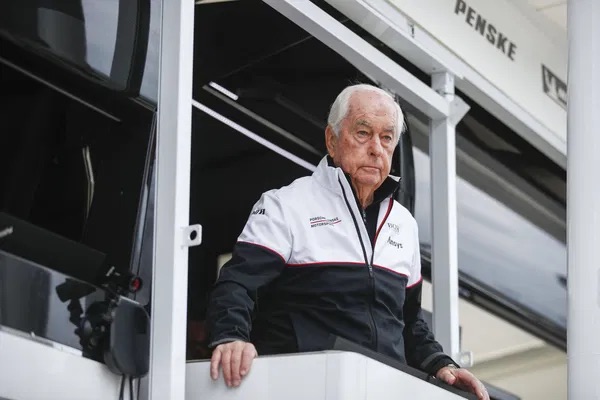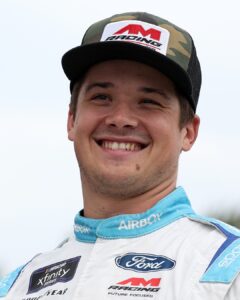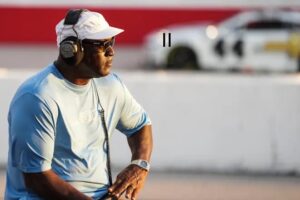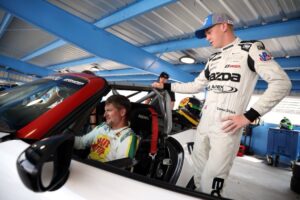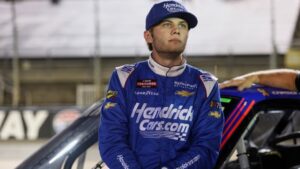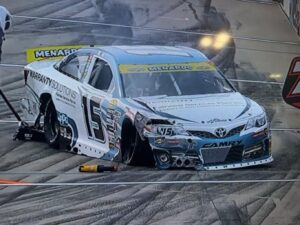Roger Penske, the billionaire businessman and owner of both Team Penske and the Indianapolis Motor Speedway, is proving once again why he’s one of the most influential figures in motorsports. While NASCAR faces growing criticism over its Next-Gen car and struggles to appease fans and drivers alike, Penske has been quietly steering his organization and the IndyCar Series into a stronger, more favorable position.

As NASCAR grapples with backlash over its Next-Gen car’s performance, safety concerns, and impact on traditional racing, Penske’s moves highlight a calculated approach that continues to enhance his reputation as a master strategist in the racing world.
The State of NASCAR and the Next-Gen Car
When NASCAR introduced the Next-Gen car in 2022, it was heralded as a revolutionary step forward. The new design aimed to level the playing field, reduce costs for teams, and bring modern engineering to stock car racing. However, the rollout has been anything but smooth.
Drivers have raised safety concerns, particularly regarding impacts that have caused injuries, and fans have expressed frustration over lackluster short-track and road course racing. Critics argue that the Next-Gen car has shifted too far from NASCAR’s traditional roots, alienating its core audience.
The backlash has created a sense of unrest within the sport, leaving NASCAR scrambling to address issues while maintaining its vision for the future.
Roger Penske’s Quiet Rise
While NASCAR contends with these challenges, Roger Penske has taken a markedly different approach with his ventures in motorsports. Penske’s acquisition of the Indianapolis Motor Speedway and the IndyCar Series in 2020 was initially met with skepticism, but his leadership has since won widespread praise.
Under Penske’s guidance, IndyCar has focused on enhancing the fan experience, maintaining competitive racing, and prioritizing safety without alienating its traditional fan base. By addressing issues proactively and methodically, Penske has positioned IndyCar as a strong alternative to NASCAR for both fans and sponsors.
Penske’s philosophy of steady, incremental improvement contrasts sharply with NASCAR’s sweeping changes, and the results are beginning to show.
The Penske Formula: Winning on and off the Track
Roger Penske’s success is built on a combination of meticulous planning, a deep understanding of motorsports, and a commitment to excellence. Here are the key elements of his winning strategy:
1. Focus on Safety: While NASCAR has faced criticism for safety lapses with the Next-Gen car, Penske has ensured that IndyCar maintains rigorous safety standards. The introduction of the aeroscreen cockpit protection system, for example, was a significant advancement in driver safety that received widespread acclaim.
2. Listening to Fans: Penske has prioritized fan input in shaping IndyCar’s direction. From schedule adjustments to creating a more accessible paddock experience, Penske has worked to ensure that the series resonates with its audience.
3. Sponsorship Growth: Penske’s ability to attract high-profile sponsors has strengthened IndyCar’s financial position. By delivering a product that appeals to fans and corporate partners alike, Penske has helped the series grow without sacrificing its identity.
4. Consistency: While NASCAR has experimented with radical changes to its schedule and car design, Penske has focused on consistency and evolution rather than revolution. This approach has helped IndyCar maintain its core identity while adapting to modern challenges.
Fan Perception: NASCAR vs. IndyCar
As NASCAR continues to grapple with the Next-Gen car’s shortcomings, some fans are turning to IndyCar for the competitive racing and authentic experience they feel NASCAR is losing. Social media platforms are rife with comparisons between the two series, with many praising IndyCar’s focus on driver skill and track diversity.
Penske’s success isn’t limited to IndyCar, either. His NASCAR team, Team Penske, remains one of the most dominant forces in the sport, with drivers like Joey Logano and Ryan Blaney regularly contending for wins and championships. This dual success across both series further solidifies Penske’s status as a motorsports titan.
NASCAR’s Next Steps
To address the backlash over the Next-Gen car, NASCAR is reportedly exploring changes to improve the product on track. Adjustments to the car’s aerodynamics, safety measures, and tire package are in development, but it remains to be seen whether these changes will be enough to win back disillusioned fans.
NASCAR President Steve Phelps has acknowledged the challenges, stating, “We’re listening to our drivers, teams, and fans. We’re committed to making the necessary improvements to ensure the future of our sport.”

Penske’s Legacy vs. NASCAR’s Struggles
As NASCAR works to right the ship, Roger Penske’s silent moves continue to highlight his unparalleled ability to navigate the complexities of motorsports. While NASCAR’s Next-Gen experiment underscores the risks of sweeping change, Penske’s methodical approach serves as a reminder of the value of patience, consistency, and attention to detail.
In the end, the contrast between NASCAR and Roger Penske isn’t just a story of two different racing philosophies—it’s a testament to the power of leadership and vision in shaping the future of motorsports.
As fans and drivers wait to see how NASCAR responds to the Next-Gen car controversy, one thing is clear: Roger Penske isn’t just keeping pace with NASCAR—he’s setting the standard for how motorsports should evolve.
